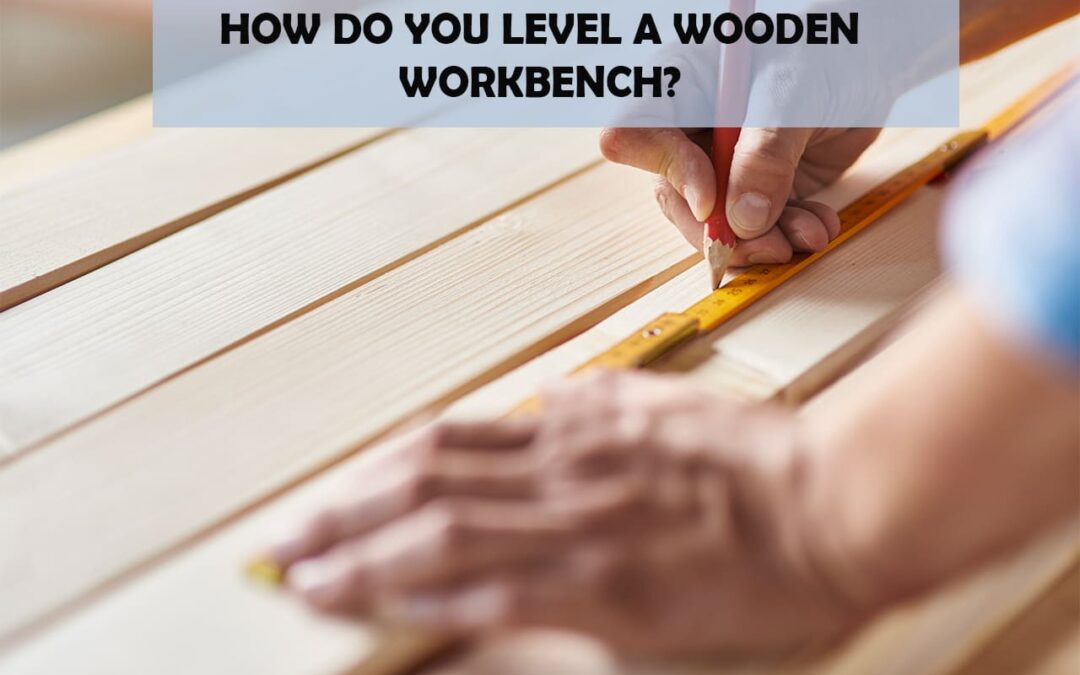Are you looking to level up your DIY skills? Leveling a wooden workbench is a great place to start. It doesn’t require any special tools or skills and can be done in just a few easy steps. All you need are some basic materials, including an adjustable wrench, measuring tape, shims, and spirit level.
With these items in hand, you’ll be able to get your workbench leveled out in no time. You’ll also feel the satisfaction of knowing that all of your projects will have a stable foundation that’s perfectly level!
So let’s get started and learn how to level your wooden workbench like a pro!
Key Takeaways
- Leveling a wooden workbench can be done in a few easy steps without special tools or skills.
- Use leveling tools and alignment tips to measure each corner about one another.
- Legs may need adjustment for evenness and stability, and shims can be used to level uneven areas on legs.
- Securely fasten legs with screws and glue for stability, and finish with sanding and protective coating for durability.
Gather the Necessary Materials
You’ll need some shims, a few tools, and a level to get started on leveling your workbench.
Gather some building materials like screws, nails, and dowels.
Make sure you have the right leveling tools such as an adjustable wrench and a hammer for adjustment.
Once you’ve gathered all of these items, you’re ready to move on to measuring the workbench.
Measure the Workbench
Measure the unevenness of the surface to determine how much adjustment is needed. Use a plumb line and spirit level to make sure the workbench is level.
- Measure the left-to-right balance with a plumb line, hanging it from various points on either side of the surface.
- Check for back-to-front balance using a spirit level, placing it in multiple positions across the width of your workbench.
- Make sure any diagonal measurements are equal when checking for squareness in all corners of your bench.
Once you’ve determined what adjustments need to be made, move on to adjusting the legs accordingly – no further leveling is required!
Adjust the Legs
To adjust your workbench, start by making sure the legs are even and stable. If necessary, use a shimming technique to level any uneven areas on the legs of the workbench. Take into account the leg material when determining what type of shim to use, such as wood or plastic for wooden legs and metal for metal legs.
Make sure that all four corners are firmly planted on the ground before moving on to testing the level.
Test the Level
Once all four corners are secure, it’s time to check if the workbench is level. Using leveling tools and alignment tips, measure each corner of the workbench about one another. If there’s a difference, make adjustments until the entire surface is even. When everything appears straightened out, double-check for accuracy by sliding a level across the top of the bench.
With any luck, each corner should now be perfectly aligned and ready for use—no more wobbling when you’re working!
Secure the Legs
Secure the legs of your workbench firmly in place with screws and glue for a sturdy finish. Legacy Tools can make this process easier and faster, but be sure to check for stability issues before moving on.
Here’s how:
- Measure the sides of the legs to ensure they’re even.
- Pre-drill holes where you plan to insert the screws.
- Secure each leg with two or more screws per side and add wood glue for extra reinforcement.
- Use clamps to hold it steady while it dries if necessary.
When done properly, this will ensure your workbench is level and stable – now onto the finishing touches!
Finishing Touches
Finishing your workbench gives it a professional look and provides lasting stability, so don’t overlook this important step.
Choosing the right sandpaper is essential to achieve a smooth surface: use medium grit for smoothing, followed by fine grit for polishing.
Once you’ve achieved the desired finish, apply an appropriate protective coating to protect against wear and tear. There are many options available; choose one that best suits your needs.
With careful selection and attention to detail, you can create a workbench that’ll last for years!
Conclusion
You’ve done it! Your workbench is now level and securely standing. Now you can get to work without worrying about your tools slipping or the bench falling over.
With a few simple steps and some patience, you’ve leveled your workbench in no time. You’ve saved yourself from a huge headache and given yourself a stable platform for all of your future projects.
Congratulations on taking the initiative to make sure your workspace is safe and efficient!

